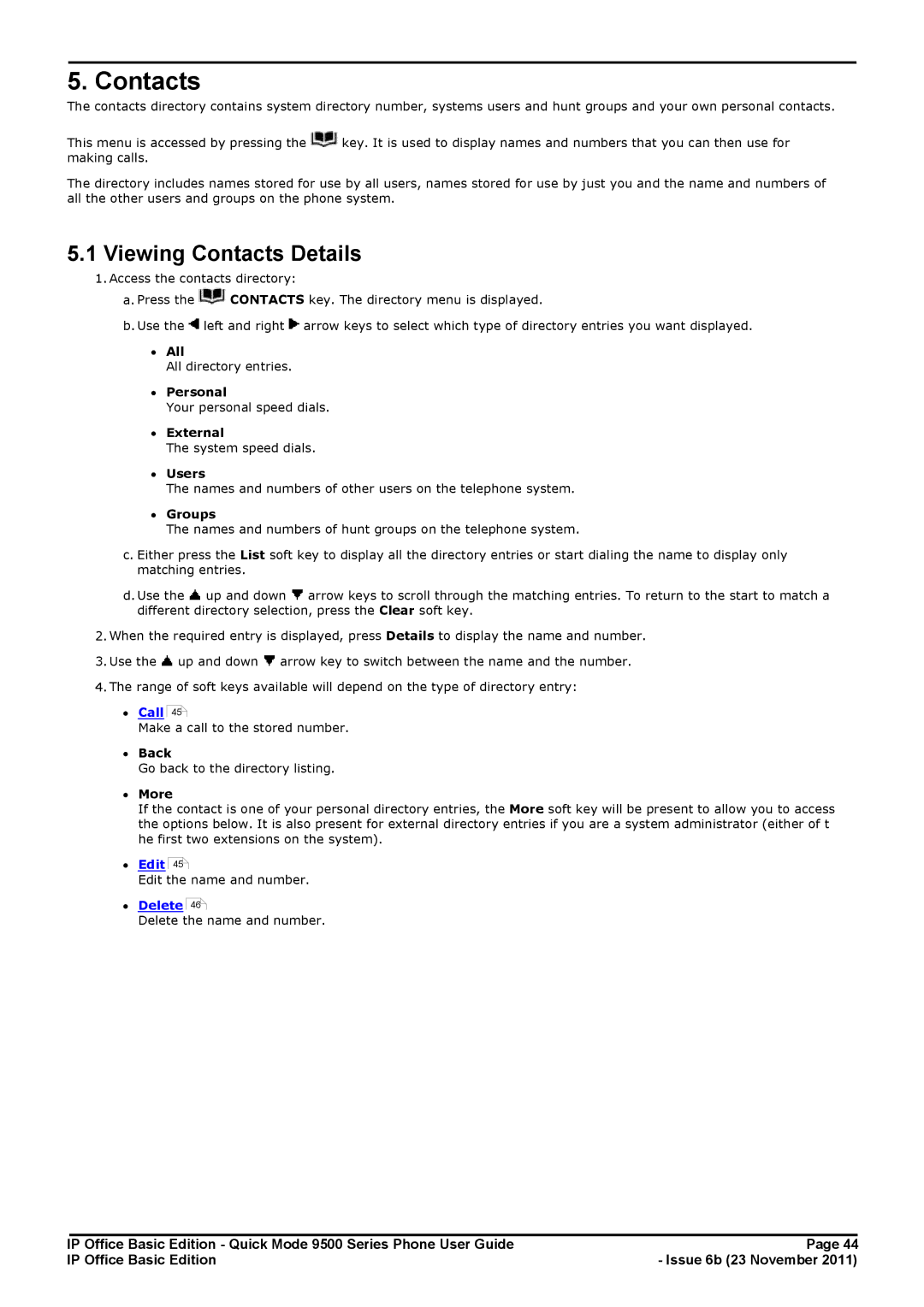
5. Contacts
The contacts directory contains system directory number, systems users and hunt groups and your own personal contacts.
This menu is accessed by pressing the ![]() key. It is used to display names and numbers that you can then use for making calls.
key. It is used to display names and numbers that you can then use for making calls.
The directory includes names stored for use by all users, names stored for use by just you and the name and numbers of all the other users and groups on the phone system.
5.1Viewing Contacts Details
1.Access the contacts directory:
a.Press the ![]() CONTACTS key. The directory menu is displayed.
CONTACTS key. The directory menu is displayed.
b.Use the ![]() left and right
left and right ![]() arrow keys to select which type of directory entries you want displayed.
arrow keys to select which type of directory entries you want displayed.
∙All
All directory entries.
∙Personal
Your personal speed dials.
∙External
The system speed dials.
∙Users
The names and numbers of other users on the telephone system.
∙Groups
The names and numbers of hunt groups on the telephone system.
c.Either press the List soft key to display all the directory entries or start dialing the name to display only matching entries.
d.Use the ![]() up and down
up and down ![]() arrow keys to scroll through the matching entries. To return to the start to match a different directory selection, press the Clear soft key.
arrow keys to scroll through the matching entries. To return to the start to match a different directory selection, press the Clear soft key.
2.When the required entry is displayed, press Details to display the name and number.
3.Use the ![]() up and down
up and down ![]() arrow key to switch between the name and the number.
arrow key to switch between the name and the number.
4.The range of soft keys available will depend on the type of directory entry:
∙Call
45![]()
Make a call to the stored number.
∙Back
Go back to the directory listing.
∙More
If the contact is one of your personal directory entries, the More soft key will be present to allow you to access the options below. It is also present for external directory entries if you are a system administrator (either of t he first two extensions on the system).
∙Edit
45![]()
Edit the name and number.
∙Delete
46![]()
Delete the name and number.
IP Office Basic Edition - Quick Mode 9500 Series Phone User Guide | Page 44 |
IP Office Basic Edition | - Issue 6b (23 November 2011) |
